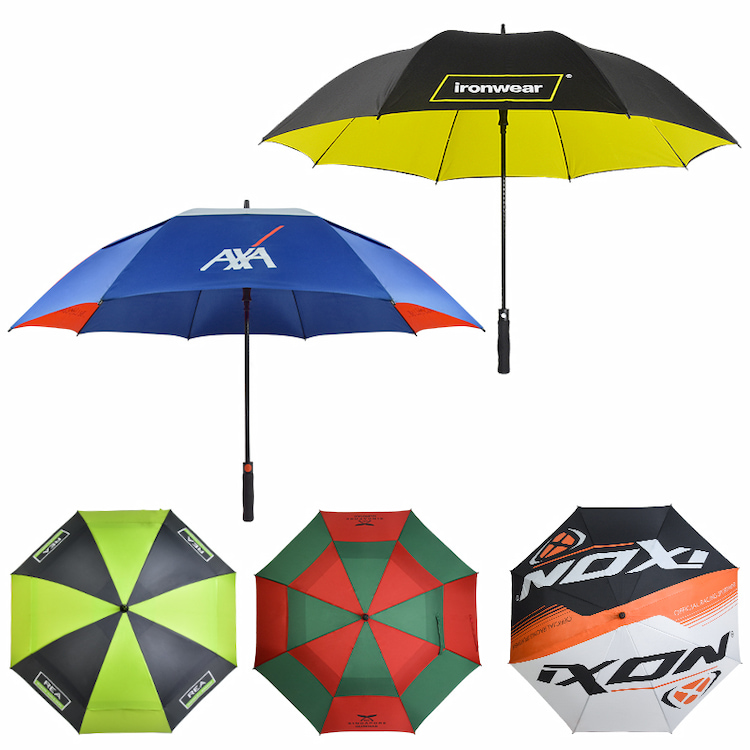Custom Umbrellas: A Guide to Personalization and Brand-Building
Aug 29 , 2025
Introduction
Custom umbrellas offer more than weather protection; they are a portable canvas for branding, personal expression, and practical utility. From corporate gifts to event swag, a well-designed custom umbrella can reinforce a message, enhance visibility, and deliver reliable performance in any weather.

- Brand visibility: Repeated exposure as people use the umbrella in public spaces.
- Customer loyalty: Thoughtful, high-quality gifts can boost goodwill and retention.
- Event and campaign relevance: Branded Automatic open golf umbrella tailored to a theme or cause.
- Functional differentiation: Unique features (auto-open, windproof design, UV protection) that stand out in the market.
Customization Options
- Main canopy and panels: Full-color or logo printing on the canopy; panel-level artwork for multi-branding.
- Ribs and shaft finishes: Matte, gloss, branded ferrules, or color-matched components.
- Handle design: Ergonomic shapes, foam grips, wood, or metal finishes; added grip textures.
- Open/close mechanisms: Auto open, push-button release, or manual.
- Size and shape: Compact pocket Umbrellas With Logos, standard 28–34 inch parasols, or specialty shapes.
- UV protection and materials: UPF rating, reflective coatings, and water-repellent fabrics.
- Packaging and accessories: Custom sleeves, gift boxes, protective pouches, and keyring tags.
- Smart features: Integrated LED lights, Bluetooth tracking, or app-based usage analytics (for corporate programs).
Design Considerations
- Brand alignment: Colors, typography, and logos should align with brand guidelines for consistency.
- Legibility: Ensure logos and text remain legible at typical viewing distances and canopy curvatures.
- Durability: Select high-quality fabric (e.g., pongee, pongee with polyurethane coating) and sturdy ribs to withstand wind.
- Usability: One-hand open/close, automatic locking mechanisms, and easy dry-out features to limit mold.
- Target audience: Consider demographics, use-case scenarios (commuting, golf, travel), and climate.
Production Process Overview
- Concept & brief: Define objectives, target quantity, budget, and timeline.
- Materials selection: Fabric, frame materials (steel, aluminum, fiberglass), handle type.
- Artwork preparation: Vector logos, color matching (Pantone), and layout mockups.
- Prototype development: Create a physical sample for approval.
- Validation testing: Wind tunnel or field tests, colorfastness, and closure reliability.
- Mass production: Quality control checks at each stage.
- Packaging and logistics: Custom packaging design, labeling, and shipping.
Quality and Sustainability Considerations
- Quality assurance: Look for brands with ISO or equivalent QA certifications, and factory audits.
- Warranty: Ensure reasonable coverage for mechanical failures and fabric integrity.
- Sustainability: Recycled materials, low-VOC finishes, and take-back programs for end-of-life umbrellas.
- Repairability: Replaceable parts (ribs, tips, handle caps) extend life and reduce waste.
Cost Drivers and Timelines
- Order quantity: Price per unit typically drops significantly with higher volumes.
- Print method: Sublimation, screen printing, or digital direct-to-fabric printing affect cost and color fidelity.
- Customization level: Full-canopy branding vs. logo-applied panels vs. bespoke handle design.
- Lead time: Standard production may take 4–8 weeks; rush options exist at premium.
Best Practices for Buyers
- Specify clear requirements: canopy size, color Pantone matches, logo file format, printing area, and finish.
- Request samples: A physical sample helps verify color, texture, and build quality.
- Check compatibility: Ensure the umbrella suits the intended climate and usage (wind, rain intensity, UV exposure).
- Evaluate total cost of ownership (TCO): Include shipping, customization fees, packaging, and after-sales support.
- Negotiate terms: MOQs, production slots, and re-order guarantees for future campaigns.
- Brand safety and approvals: Ensure trademark clearance and compliance with advertising standards.
Market Trends
- Hybrid customization: Combining promotional umbrellas with wearable tech integrations or smart features.
- Sustainable branding: Eco-friendly fabrics and packaging growing in popularity.
- Ambient and experiential marketing: Umbrellas designed for events, with QR codes or NFC tags linking to campaigns.
- Global logistics optimization: Local production hubs to shorten lead times and reduce carbon footprint.
Case Study Ideas (for sections or sidebars)
- A corporate gift program using lightweight, windproof umbrellas with full-coverage branding.
- An event sponsor package featuring compact umbrellas with UV-protective canopies and reusable sleeves.
- A retail collaboration where a brand partners with a manufacturer to produce limited-edition umbrella lines.
Custom umbrellas offer a versatile platform for branding, user experience, and practical utility. By carefully selecting materials, printing methods, and design features aligned with audience needs, organizations can transform a simple weather accessory into a memorable and functional marketing asset.

 Network Supported
Network Supported